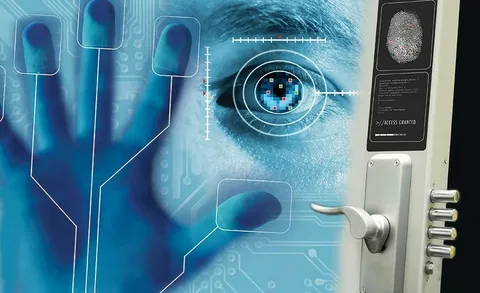
Biometric surveillance, with its ability to uniquely identify individuals based on physiological or behavioral characteristics, presents a host of ethical considerations that intersect privacy, security, and civil liberties. As the use of biometrics becomes more pervasive in surveillance systems worldwide, a critical examination of the ethical implications is essential. This article delves into the complex ethical landscape surrounding biometric surveillance and explores the challenges and considerations inherent in its deployment.
1. Invasive Nature of Biometric Data Collection
One of the primary ethical concerns in biometric surveillance lies in the invasive nature of data collection. Biometric information, such as fingerprints, facial features, or iris scans, is highly personal and unique to each individual. The collection of such intimate data raises questions about consent, privacy, and the potential misuse of this information without individuals’ explicit permission.
2. Right to Privacy and Informed Consent
The right to privacy is a fundamental human right, and the ethical use of biometric surveillance must respect and uphold this right. Individuals should be fully informed about the collection, storage, and usage of their biometric data. Obtaining informed consent ensures that individuals have the autonomy to make decisions about how their unique identifiers are utilized in surveillance systems.
3. Surveillance Creep and Mission Creep
Surveillance creep refers to the gradual expansion of surveillance beyond its original purpose, while mission creep involves the widening of the objectives of a surveillance program. Ethical concerns arise when biometric surveillance, initially intended for specific purposes, extends its reach into other domains or when its mission evolves without appropriate oversight. Striking a balance between security objectives and individual rights is crucial.
4. Potential for Discrimination and Bias
Biometric systems, if not designed and implemented carefully, have the potential to perpetuate discrimination and bias. Issues such as racial or gender bias in facial recognition algorithms have been well-documented. Ethical considerations demand that biometric surveillance technologies undergo rigorous testing and validation to mitigate biases and ensure fair and equitable treatment of all individuals.
5. Government Surveillance and Civil Liberties
The use of biometric surveillance by governments raises significant ethical concerns related to civil liberties. Mass surveillance programs, especially when deployed without proper checks and balances, can infringe upon individuals’ freedom of association, freedom of expression, and the right to assemble peacefully. Striking a balance between security measures and protecting civil liberties is paramount.
6. Security of Biometric Databases
The security of biometric databases is a critical ethical consideration. Breaches of these databases can have severe consequences, leading to identity theft and unauthorized access. Ethical deployment of biometric surveillance systems requires robust cybersecurity measures, encryption protocols, and regular audits to ensure the integrity and protection of the stored biometric data.
7. Lack of Standards and Regulations
The lack of standardized ethical guidelines and regulations for biometric surveillance poses challenges in ensuring responsible and accountable use. Ethical frameworks must be established to guide the deployment of biometric technologies, with a focus on transparency, accountability, and adherence to human rights principles.
8. Public Awareness and Education
Ethical biometric surveillance practices necessitate public awareness and education. Individuals should be informed about how biometric data is collected, processed, and used. Promoting transparency and educating the public about the ethical considerations surrounding biometric surveillance empower individuals to make informed decisions and advocate for their rights.
9. Consent for Vulnerable Populations
Vulnerable populations, including children, refugees, and marginalized communities, require special ethical considerations in biometric surveillance. Obtaining informed consent becomes more challenging in these cases, and additional safeguards are necessary to protect the rights and dignity of individuals within these vulnerable groups.
10. Accountability and Oversight Mechanisms
Establishing accountability and oversight mechanisms is crucial for ethical biometric surveillance. Clear lines of responsibility, independent audits, and regular reviews of surveillance programs contribute to ensuring that the use of biometric technologies aligns with ethical standards and respects individual rights.
Conclusion
The ethics of biometric surveillance demand a delicate balance between the benefits of enhanced security and the protection of individual rights. As society navigates the integration of biometric technologies into surveillance systems, it is imperative to establish robust ethical frameworks, informed by transparency, accountability, and a commitment to upholding human rights. Only through a thoughtful and ethical approach can biometric surveillance contribute to public safety without compromising the fundamental principles of privacy and dignity.
Frequently Asked Questions
- Why is the collection of biometric data considered invasive?
- The collection of biometric data is considered invasive because it involves gathering highly personal and unique identifiers, such as fingerprints, facial features, or iris scans. This intimate data raises concerns about consent, privacy, and the potential misuse of such information without individuals’ explicit permission.
- What is surveillance creep in the context of biometric surveillance?
- Surveillance creep refers to the gradual expansion of surveillance beyond its original purpose. In the context of biometric surveillance, it involves the extension of surveillance activities into other domains beyond the initially intended purpose.
- How does biometric surveillance potentially contribute to discrimination and bias?
- Biometric surveillance systems, if not designed and implemented carefully, have the potential to perpetuate discrimination and bias. Issues such as racial or gender bias in facial recognition algorithms have been documented. Ethical considerations demand rigorous testing and validation to mitigate biases and ensure fair treatment of all individuals.
- Why is the security of biometric databases an ethical concern?
- The security of biometric databases is an ethical concern because breaches can lead to severe consequences, including identity theft and unauthorized access. Ethical deployment of biometric surveillance systems requires robust cybersecurity measures, encryption protocols, and regular audits to protect the integrity of stored biometric data.
- How does the lack of standards and regulations impact the ethical use of biometric surveillance?
- The lack of standardized ethical guidelines and regulations for biometric surveillance poses challenges in ensuring responsible and accountable use. Establishing ethical frameworks is essential to guide the deployment of biometric technologies, with a focus on transparency, accountability, and adherence to human rights principles.



